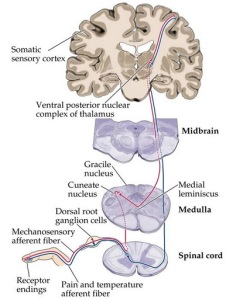Originally written by Brandon Morrison
Proprioception and kinesthetic awareness are two different terms that are often used interchangeably but have two distinct meanings. However, it is absolutely imperative that a successful athlete has a high degree of both.
This article will take a look at the differences between proprioception and kinesthetic awareness, and how they work together to keep you alive.
Proprioception
Put simply, proprioception is the body’s sense of its parts and the relative location of its other body parts, and the amount of strength that is being exerted in movement. The central nervous system (CNS) is the broadcast powerhouse of the human body that receives sensory stimuli from the outside.
When our CNS receives the impulse, it sends the appropriate instructions to our muscles and joints on how to react. The brain also receives some messages that cause the body to react unconsciously (for example, rubbing your nose or running upstairs).
Gymnasts have unbelievable levels of both proprioception and kinesthetic awareness. This video has a lot of fancy graphics to show you just how impressive it is.
Kinesthetic Awareness
In simplest terms, kinesthetic awareness is the body’s sense of its own relative position in space and time (no, I am not talking about time travel, calm down Stephen Hawking). Kinesthetic awareness gives your body the ability to coordinate motion and the ability to perform almost any activity.
People can have different levels of natural kinesthetic awareness, and it is definitely a skill that can be lost with use.
This is why when someone is wasted off of butter beer, their coordination is so impaired. The alcohol has affected the CNS and their proprioception and kinesthetic awareness have been impaired.
Even if you are an accident-prone klutz, your skills can still be improved with exercise. Specifically, an exercise that challenges both your balance and equilibrium. Two forms of exercise with the ability to increase balance and equilibrium immediately come to mind: Olympic weightlifting & gymnastics.
It takes a high degree of these skills to be able to take a fully loaded bar off the ground, hit the triple extension, and land on the heels with the bar overhead in a solid position.
The same goes for Gymnastics, to be able to transfer from high bar to low bar and be in control of one’s own body in the midst of a 720-degree turn is no small feat, to say the least.
Proprioception and kinesthetic awareness decrease after an injury–although, your brain will still have the skills stores, so it is easier to re-learn them. Even though your strength may come back easier, you will still need to spend time improving your proprioception and kinesthetic awareness so that you can fully recover.
Hopefully, you learned something new. My proprioception has improved simply from typing “proprioception & kinesthetic awareness” multiple times in this article.

